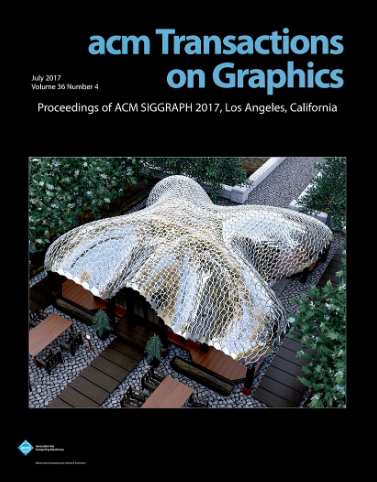光控制的端到端表面优化
IF 9.5
1区 计算机科学
Q1 COMPUTER SCIENCE, SOFTWARE ENGINEERING
引用次数: 0
摘要
设计一个自由曲面来反射或折射光以实现目标分布是一个具有挑战性的逆问题。在本文中,我们提出了一种光学表面网格的端到端优化策略。我们的配方利用了一种新颖的可微分渲染模型,并直接由结果光分布和目标分布之间的差异驱动。我们还强制执行与制造要求相关的几何约束,以方便CNC铣削和抛光设计表面。为了解决局部最小值问题,我们在当前网格和目标分布之间建立了一个基于面的最优运输问题,该问题对表面形状进行了有效的大变化。我们的最佳传输更新和渲染引导优化相结合,产生了一个光学表面设计,其结果图像与目标非常相似,而我们优化中的几何约束有助于确保渲染模型和最终物理结果之间的一致性。通过模拟渲染和物理原型,我们的算法在各种目标图像上证明了其有效性。本文章由计算机程序翻译,如有差异,请以英文原文为准。
End-to-end Surface Optimization for Light Control
Designing a freeform surface to reflect or refract light to achieve a target distribution is a challenging inverse problem. In this paper, we propose an end-to-end optimization strategy for an optical surface mesh. Our formulation leverages a novel differentiable rendering model, and is directly driven by the difference between the resulting light distribution and the target distribution. We also enforce geometric constraints related to fabrication requirements, to facilitate CNC milling and polishing of the designed surface. To address the issue of local minima, we formulate a face-based optimal transport problem between the current mesh and the target distribution, which makes effective large changes to the surface shape. The combination of our optimal transport update and rendering-guided optimization produces an optical surface design with a resulting image closely resembling the target, while the geometric constraints in our optimization help to ensure consistency between the rendering model and the final physical results. The effectiveness of our algorithm is demonstrated on a variety of target images using both simulated rendering and physical prototypes.
求助全文
通过发布文献求助,成功后即可免费获取论文全文。
去求助
来源期刊

ACM Transactions on Graphics
工程技术-计算机:软件工程
CiteScore
14.30
自引率
25.80%
发文量
193
审稿时长
12 months
期刊介绍:
ACM Transactions on Graphics (TOG) is a peer-reviewed scientific journal that aims to disseminate the latest findings of note in the field of computer graphics. It has been published since 1982 by the Association for Computing Machinery. Starting in 2003, all papers accepted for presentation at the annual SIGGRAPH conference are printed in a special summer issue of the journal.
 求助内容:
求助内容: 应助结果提醒方式:
应助结果提醒方式:


